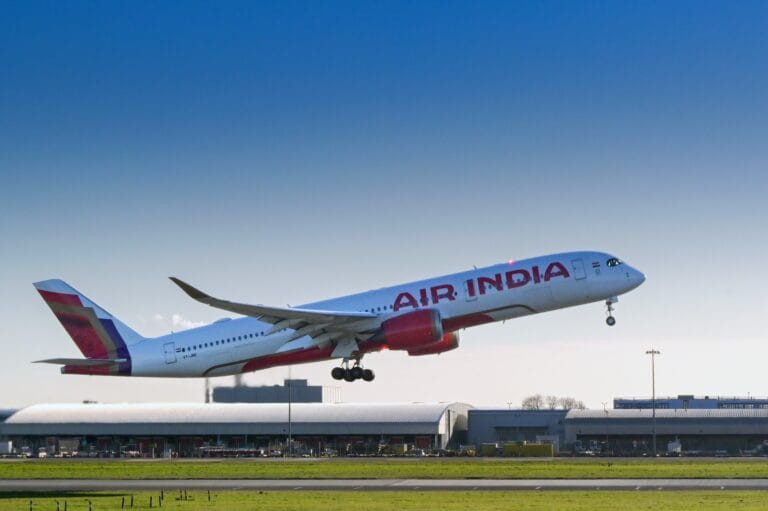The formal signing of the UK–India Free Trade Agreement (FTA) in July represents a watershed moment in bilateral economic relations. While it is widely recognised as the most comprehensive trade accord signed by the United Kingdom since its exit from the European Union, its implications for the global air cargo industry—and for associated policy, regulatory, and infrastructure ecosystems—are particularly notable. The agreement not only reduces tariffs and unlocks market access across a broad spectrum of goods and services but also catalyses the development of high-velocity, digitally enabled air freight corridors between two of the world’s fastest-growing economies.
The Comprehensive Economic and Trade Agreement, as it is officially titled, is expected to double bilateral trade to US$120 billion by 2030. From an air logistics perspective, the accord arrives at a critical time when the industry is seeking to recover momentum post-pandemic, address capacity constraints, and align itself more closely with sustainability and digital compliance imperatives. For freight forwarders, integrators, customs authorities, and airport planners, the FTA offers a blueprint for more seamless trade across borders—underpinned by efficiency, predictability, and resilience.
READ MORE: India’s connective narrative
Air cargo corridors
The FTA eliminates tariffs on approximately 99 percent of Indian exports to the UK, which include key commodities such as textiles, leather goods, gems and jewellery, processed foods, pharmaceuticals, and engineering products. On the UK side, phased tariff reductions will benefit aerospace components, electronics, cosmetics, alcoholic beverages, and medical devices. According to the UK government’s impact assessment, the agreement could contribute up to £4.8 billion to UK GDP and £5.1 billion to India’s GDP over the long term.
These volumes are not merely statistical projections; they translate directly into demand for air cargo capacity—especially for time-sensitive, high-value goods. Trade lanes between Mumbai, Delhi, Bengaluru, and Chennai and key UK airports such as London Heathrow, East Midlands, and Manchester are expected to see substantial growth in airfreight volumes. IATA’s March 2025 market analysis already noted a 6.1 percent year-on-year increase in international cargo tonne-kilometres (CTKs), and this FTA is likely to act as an additional stimulant, particularly for bellyhold and freighter capacity utilisation.

Sectoral priorities
Among the major cargo categories impacted, pharmaceutical logistics will likely emerge as a key beneficiary. India is a leading global supplier of generic medicines and vaccines, while the UK is a significant importer and distributor across Europe. The removal of tariffs on medicinal products and medical devices, alongside customs simplification provisions, will facilitate cold chain logistics and reduce dwell times.
Perishables and seasonal agri-exports—such as mangoes, tea, spices, and marine products—also stand to gain from preferential access. The agreement’s commitment to expedited customs release (within 48 hours where documentation is in order) aligns with industry requirements for freshness and shelf-life optimisation. For UK exporters, the removal of duties on processed foods and specialty products creates new opportunities in Indian Tier 1 and Tier 2 cities—many of which are now served by growing regional airport infrastructure.
Modernising customs
The FTA incorporates a dedicated chapter on customs procedures and trade facilitation, calling for predictable release timelines, transparency in border procedures, and the deployment of modern digital tools. This aligns with broader air cargo industry shifts toward IATA’s ONE Record data-sharing standard and e-freight documentation protocols.
The agreement encourages the use of pre-arrival processing, post-clearance audits, and coordinated border management to accelerate cargo movement. For authorities in both nations, this will necessitate the integration of digital clearance systems, risk profiling tools, and harmonised data standards—especially for goods such as pharmaceuticals and dual-use equipment.
Such provisions also enhance the ability of air cargo operators and ground handlers to plan accurately, reduce delays, and manage warehouse space and cold chain inventories more efficiently. These systems, once integrated with freight forwarders’ visibility platforms and airline operations control, can offer near-real-time supply chain transparency.
READ MORE: Powering India’s air cargo growth with digital intelligence

Labour mobility and services trade
While the FTA does not liberalise immigration broadly, it does provide for the mobility of skilled professionals—facilitating the movement of Indian service suppliers under managed quotas. Approximately 1,800 professionals per year may benefit from streamlined visa processes and exemptions from national insurance contributions for short-term assignments.
This has implications for aviation services, logistics management, and supply chain consulting. Indian freight specialists, cold chain technologists, and pharma logistics managers can now more easily operate in the UK market, contributing to knowledge transfer and operational integration.





